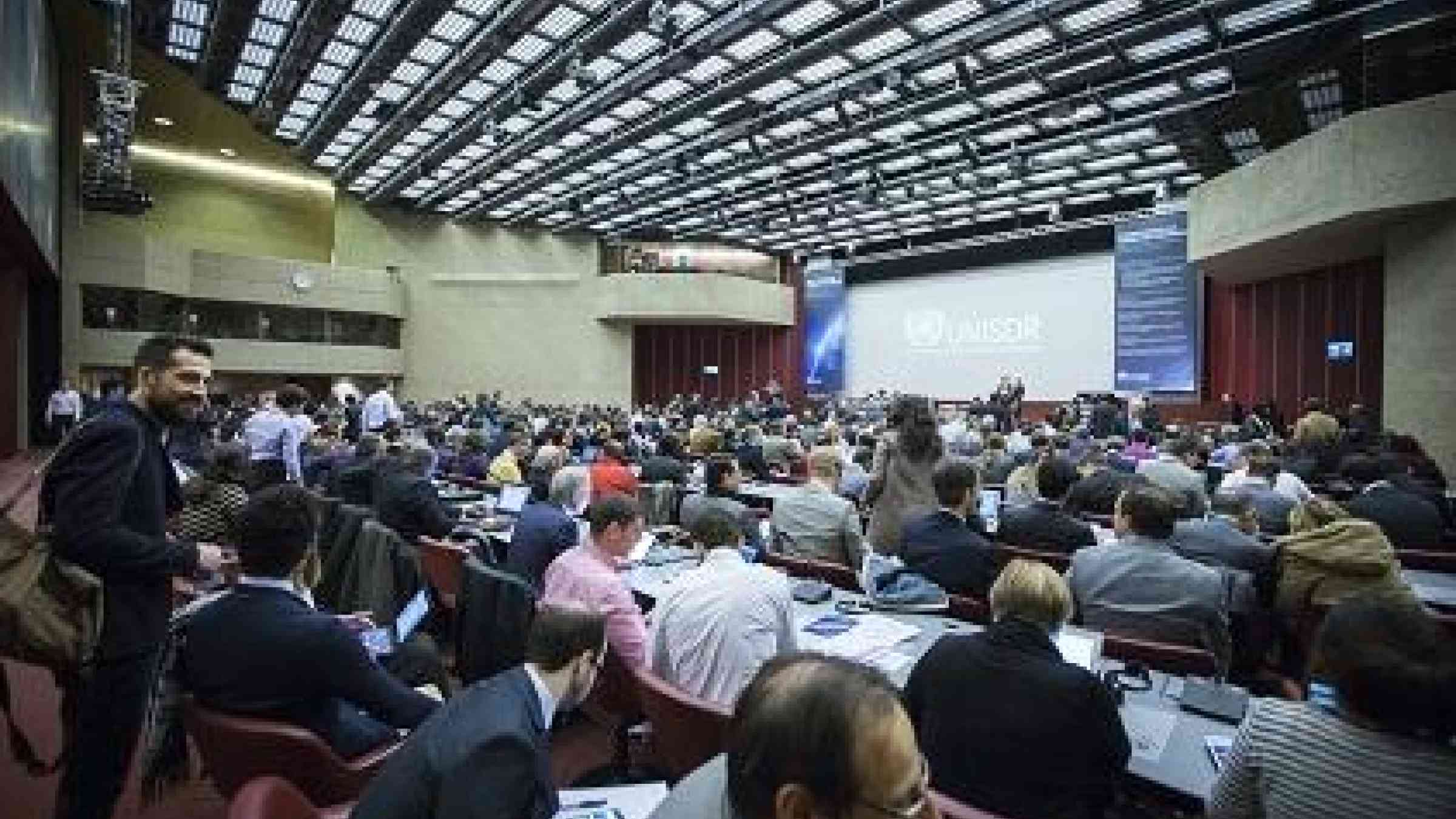Scientists pledge Sendai action

GENEVA, January 29 2016 – Hundreds of scientists and policymakers today pledged to step up action on the Sendai Framework for Disaster Risk Reduction, a 15-year global agreement that aims to curb deaths and economic losses from natural and man-made hazards.
The first-ever UNISDR Science and Technology Conference, which drew 750 delegates to Geneva from Wednesday through to Friday, marked a crucial part of the drive to implement the Sendai Framework, which was adopted by the international community in March last year.
Delegates collectively launched a new Science and Technology Partnership in support of disaster risk reduction, comprising over 65 agencies, science networks and organization, and which is expected to expand over coming weeks.
The head of the UN Office for Disaster Risk Reduction (UNISDR), Dr. Robert Glasser, said the Partnership will be key to achieving the targets of the Sendai Framework through to 2030.
He underlined that reducing disaster risk was part of the wider global agenda of making development sustainable and tackling the impacts of climate change -- over 100 million people are affected by disasters every year, with extreme weather and climate-related events accounting for 90% of natural hazards.
“I would like to take a moment for us to consider the profound responsibility that the science and technology sector, and all of us, have for reducing disaster risk – we are looking at nothing short of a transformation in the way we go about economic, social and environmental development,” said Dr. Glasser.
“This transformation is pertinent to both developing and developed countries because this issue truly affects us all. We are not going to meet this challenge by only responding to disasters, as important as that is; rather, we have to transform the way we plan at the local, national, regional and international levels, and science and technology will be very important for this.”
That message was echoed by Mr. Ian Clark, a senior disaster risk expert at the European Commission’s humanitarian aid and civil protection department, who said: “It’s clear that loss and damage will increase, so resilience and disaster risk reduction are all the more important.”
“It’s clear that disaster risk reduction is an investment, not a cost,” he added. Studies show that every dollar invested into disaster preparedness saves seven dollars in disaster aftermath.
Recognising the importance of research, scientific and technical information for disaster risk reduction, UNISDR established a special advisory body in 2001. Its current incarnation, the Scientific and Technical Advisory Group (STAG), is a 12-member panel of experts from around the world.
The new Partnership takes that to a new level.
A constant theme at the conference was how to ensure a smooth flow between scientific research and the creation and implementation of policy, and the “last mile” to communities and individuals, ensuring that they understand disaster risk and take action to curb it.
“A resilient community is a community that knows what it could so, because the science and data is there for it to have,” said Professor Virginia Murray, chair of the conference organizing committee, Vice-chair of the STAG and Consultant in Global Disaster Risk Reduction for Public Health England.
“The key issue is how we connect science to local needs,” said Ms. Yvette Stevens, Ambassdor of Sierra Leone to the United Nations, who chaired the conference’s work on the new partnership. “It is not enough that the science is available. We have challenges translating science into policy, in communicating progress, and also face budgetary issues.”
Among the focuses of the Partnership is how better to harness technology such as earth observation from space or geographical information systems, as well as methods such as crowd-sourcing to help assess vulnerability – the overall goal being to improve risk assessment, strengthening of standards, collection of data and the deployment of efficient early warning systems. In addition, it brings together a vast range of disciplines, from the ultra hi-tech through to social work research.
“Implementation of the Sendai Framework will rely on integrated and multi-disciplinary research that bridges social and natural sciences and uses both quantitative and qualitative data. It will rely on applied science that connects the macro to the micro,” said Dr. Glasser.
He also called for users to be included in the earliest stages of developing research and technology including through improved dialogues with citizen groups and the use of scenarios that make science sensible to decision-makers and the general public. He said that sustainable funding of long-term disaster risk science was a critical issue, with innovative models needed, including via the private sector.